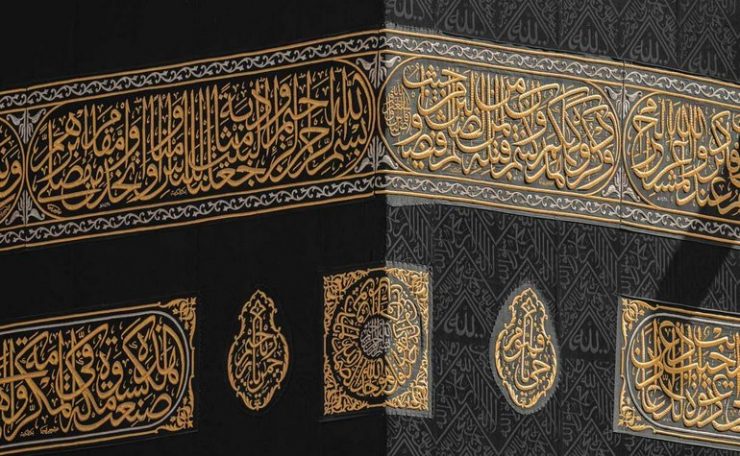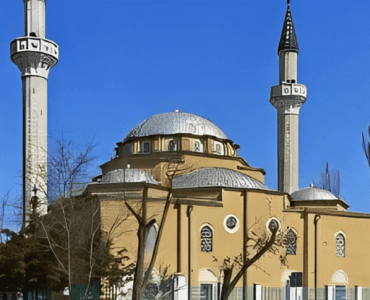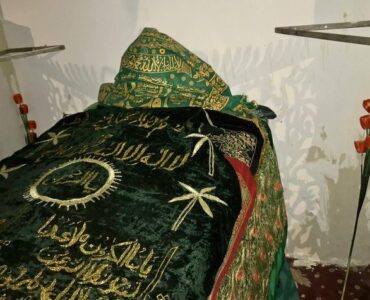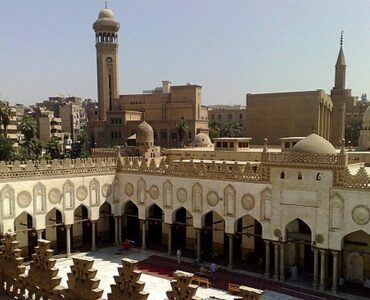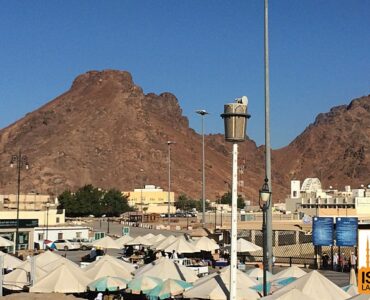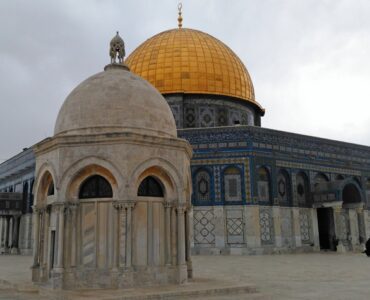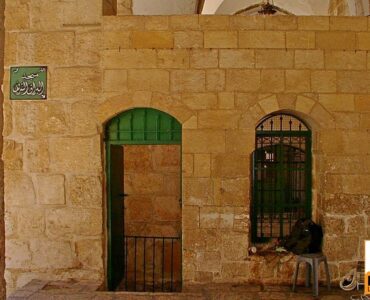The Kiswah (Arabic: كسوة) is the cloth that covers the Ka’bah. It is changed annually on the 9th Dhul Hijjah, on the day Hajj pilgrims leave to go to the plain of Arafat. The term Kiswah means ‘robe’ and is also known as the ‘Ghilaf’. The cloth is woven from silk and cotton and adorned with verses from the Quran.
Annual installation
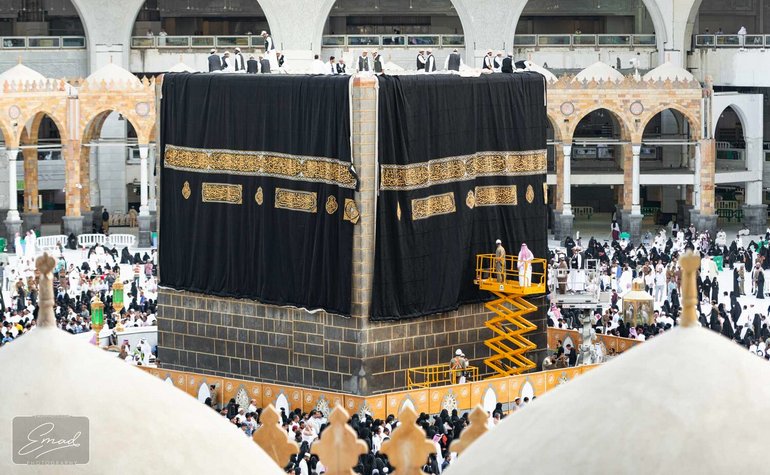

- The black cloth is usually made ready two months before the beginning of the Hajj. The Keeper of the Ka’bah, from the Bani Shaybah family, formally take possession of it.
- The old Kiswah is cut into pieces and presented as gifts to Muslim countries and dignitaries.
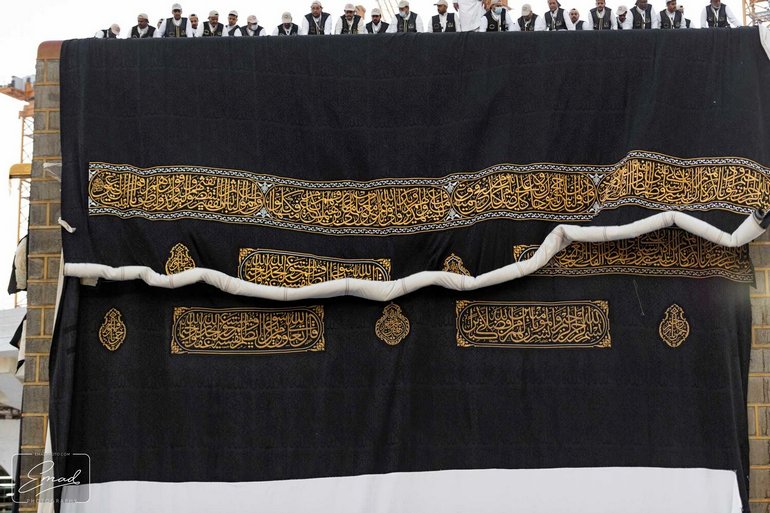

Some facts about the Kiswah
- It’s made from about 650kg of natural silk which is imported from Italy.
- It uses 120kg of gold and silver threads which come from Germany.
- The process of embroidery takes around 8-10 months.
- Over 200 people work on making the Kiswah every year
- It costs around $4.5m (£3.4m) to make.
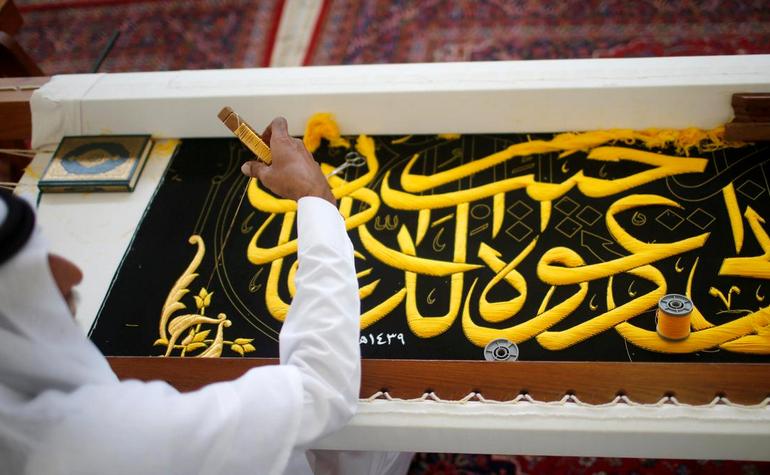

What’s written on the Kiswah
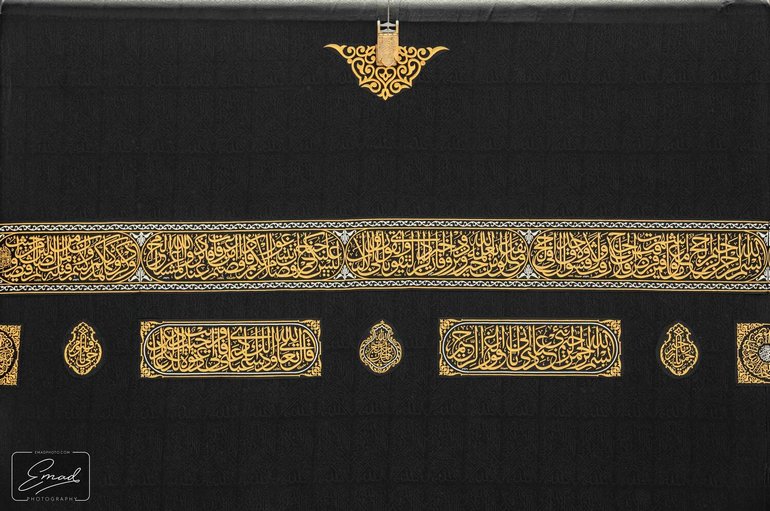

- Most of the gold embroidery are relevant verses from the Quran. An example is below which can be found on the side between the Hajar al-Aswad and the Rukan Yamani. It starts with ‘Bismillah‘ followed by a verse from Surah Hajj:
In the name of God, most Gracious, most Compassionate. That is so. And whoever honours the symbols of Allah, it is certainly out of the piety of the heart.”
Surah Hajj:32
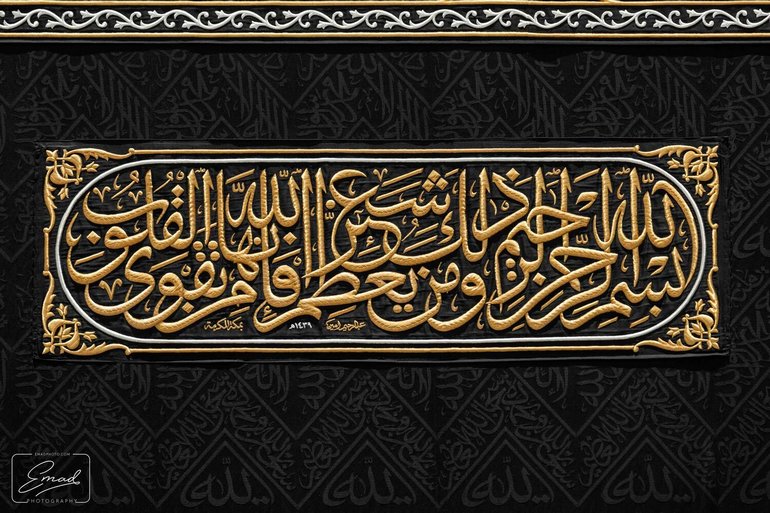

- The smaller pieces are praises of Allah (ﷻ). On the side of the Sitara is a panel commemorating the work on the Kiswah done by the present ruler.
The Kiswah before the advent of Islam
- The Prophet Ismail (عليه السلام) is believed to be the first person who put up a partial covering on the Ka’bah.
- According to legend, it was the Yemeni King Tubba (Abu Karib) who was the first person to cover the Ka’bah entirely. He is said to have hung it with red-striped Ma’afir cloth, a special cloth woven in the Ta’izz district of Yemen.
- After King Tubba, the Ka’bah was covered by many people who regarded it as a religious duty. Anybody who wanted to cover the Ka’bah could do so whenever they wanted and with whatever type of fabric. There were even times when the Ka’bah was on the edge of collapsing under the excessive weight of the cloth piled on it.
- Up to the eve of Islam, sources mention that prominent members of the Quraysh would use leather and woven palm leaves as well as textiles to cover the Ka’bah.
- The first Arab woman to cover the Ka’bah with silk and brocade was Natilah bint Jinab, a wife of Abdul-Muttalib and the mother of Abbas (رضي الله عنه).
- The Prophet (ﷺ) witnessed the ceremony for covering the Ka’bah as a six year old child.
The Kiswah in the time of the Prophet (ﷺ) and the Caliphs
- The Prophet (ﷺ) and the Sahabah did not cover the Ka’bah before the Conquest of Makkah because the Makkan disbelievers would not let them.
- After Makkah was conquered, the Kiswah wasn’t changed until the existing one was burnt by a woman who wanted to perfume it with incense. The replacement Kiswah was a red and white striped Yemeni cloth. The Caliphs Abu Bakr, Umar and Uthman (رضي الله عنهم) covered the Ka’bah with ‘qibati’ (a thin white cloth from Egypt) during their rule.
- It’s reported that Mu’awiyyah bin Abi Sufyan (رضي الله عنه) used to cover the Ka’bah twice a year, with brocade on the Day Of Ashura, and qibati at the end of Ramadhan. This was also the practice of Abdullah bin Zubair (May Allah be pleased with him).
Some of the changes to the Kiswah throughout history
- Providing the cloth for the Ka’bah became the privilege of the ruler who claimed suzerainty over Makkah.
- During the rule of Caliph Al-Mamun, the Ka’bah would be decorated with three different covers, with red brocade on the 8th of Dhul Hijjah, with qibati on the day when the new moon of Rajab was sighted, and with white brocade on the 27th day of Ramadhan.
- The Abbasid Caliph Al-Nasir first draped the Ka’bah with a green Kiswah. It was subsequently changed to black, and has remained black since 1224.
- Private individuals are also known to have given textiles for the Ka’bah. A notable example was the wealthy twelfth century medieval merchant Ramisht from Siraf, who is said to have covered the Ka’bah with Chinese textiles.
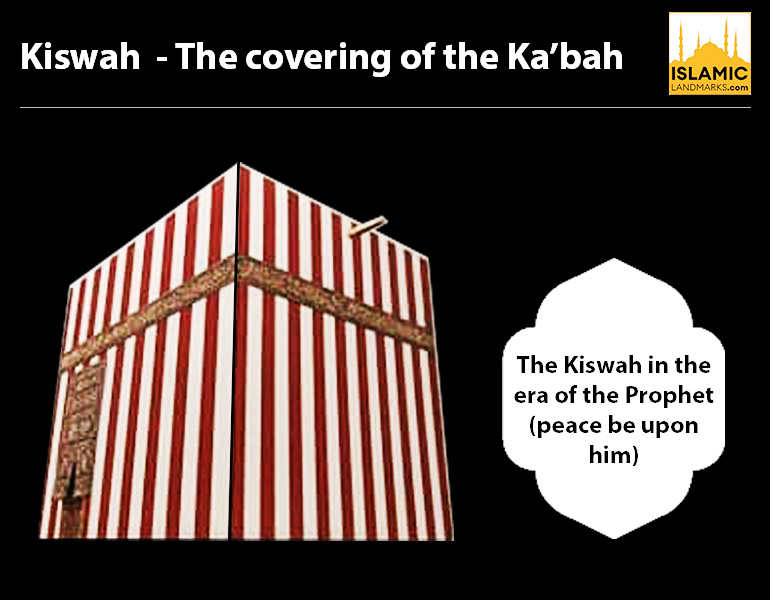

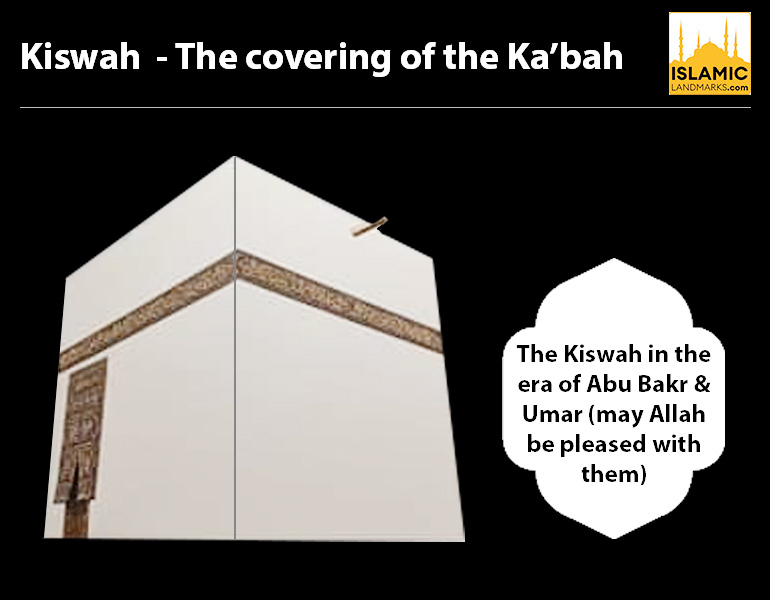

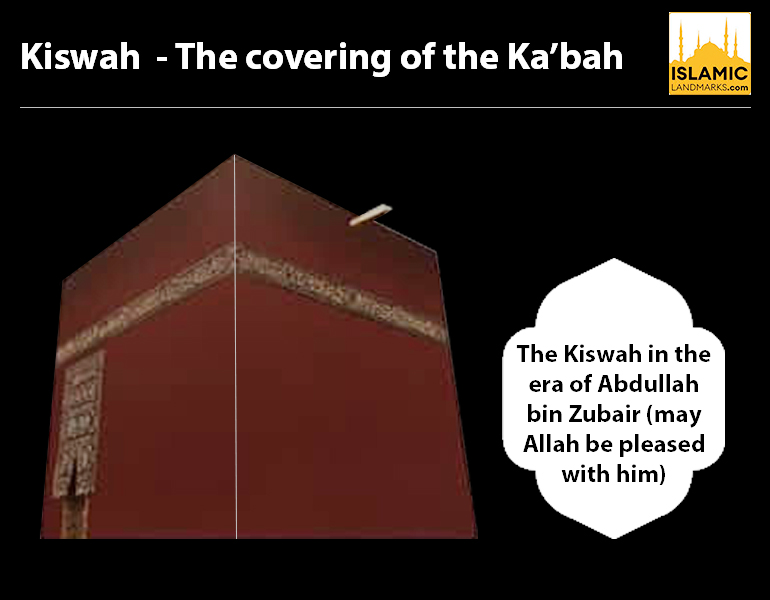

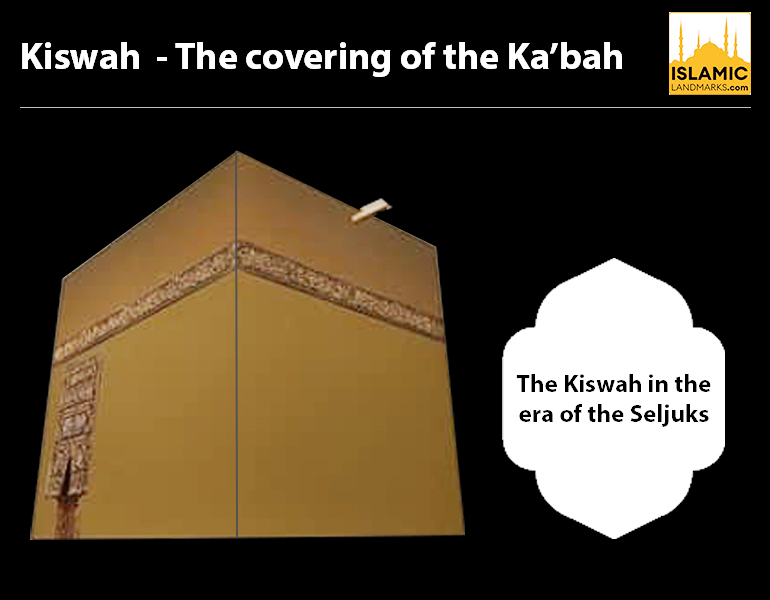

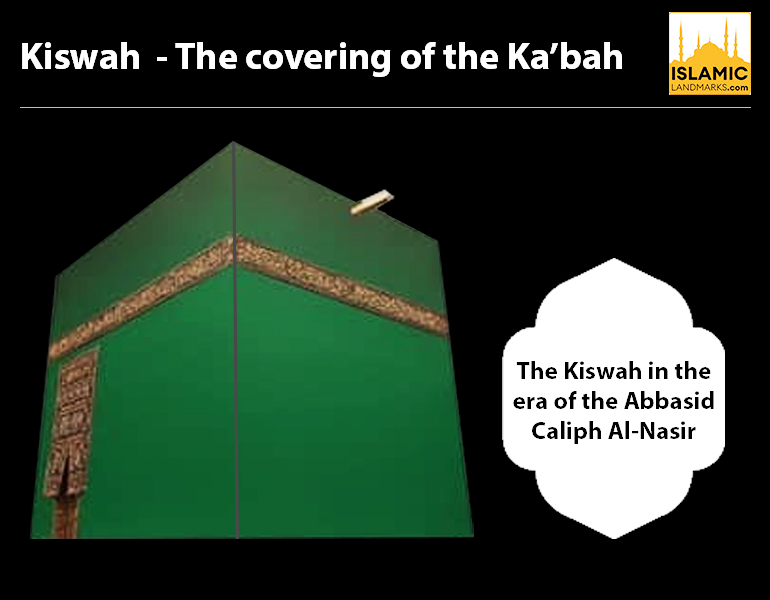

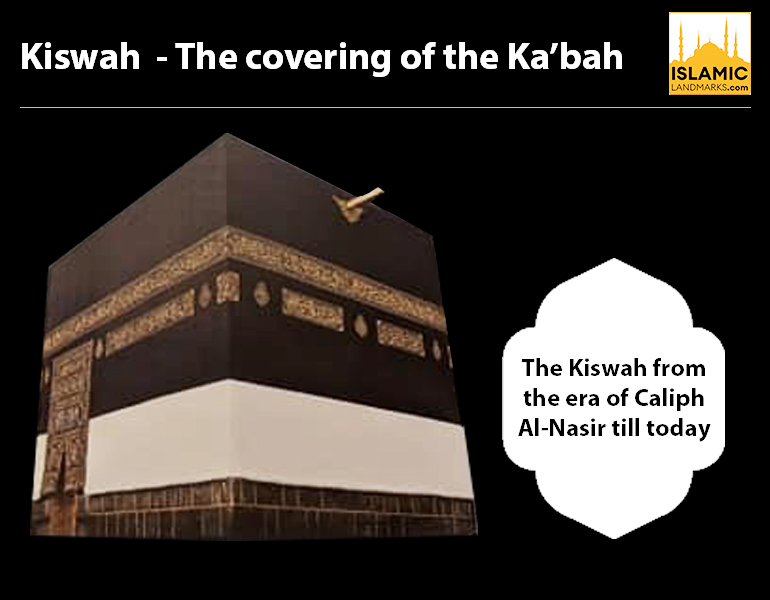

Historical manufacturing
- From the 13th century, in the time of the Ayyubid ruler as-Salih, the Kiswah was manufactured in Egypt, with material sourced locally as well as from Sudan, India, and Iraq.
- The Kiswah would be transported from Egypt to Makkah on an annual basis except on a few occasions when it was sent from Yemen, Syria and Turkey.
- A factory for the manufacturing of the Kiswah was established by Muhammad Ali Pasha in 1817 in the quarter of Kharanfash in Cairo. Skilled craftsmen were in charge of different aspects of the manufacture and well-known calligraphers were involved in the design of the inscriptions.
- The work on the textiles was done through contracts between the tentmakers (khaiman) and the ministry of religious endowments (awqaf). The tentmakers would be responsible for cutting out the Kiswah; the Sitara for the door of the Ka’bah and the Bab ut-Taubah, the Hizam (the belt around the Ka’bah), the key bag and the Kiswah for the Maqame Ebrahim. These would then be turned over to the embroiderers.
- The Kiswah continued to be made from the Kharanfash factory in Egypt until 1927 when its manufacturing was moved to Saudi Arabia.
The Mahmal procession
- For centuries, there was a ceremonial tradition for the Kiswah to be sent annually from Cairo to Makkah with a Hajj carawan. The Kiswah would be contained in an elaborate container known as a Mahmal, carried by a strong camel.
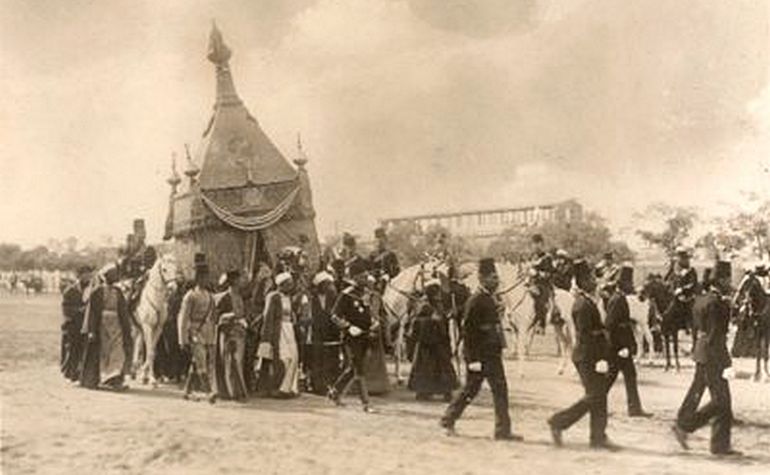

- The procession would include a convoy other camels carrying supplies and the luggage of accompanying pilgrims. Soldiers would guard them all the way.
- The Mahmal was usually a large tent shaped container covered in a silk cloth embroidered in silver and gold-plated silver wire, with inscriptions from the Quran. The name and date of the donor who commissioned the Mahmal cover was usually embroidered in the front of the Mahmal’s pyramidically shaped top.
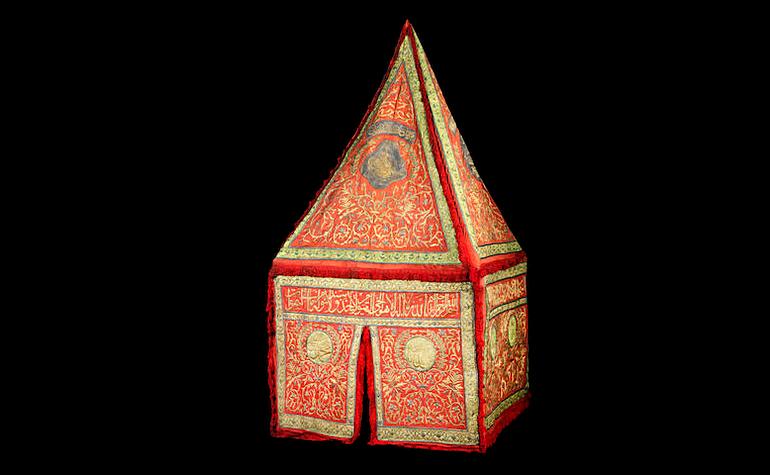

- After the Hajj was complete, the Mahmal would return back to Cairo with the old Kiswah of the Ka’bah.
- The oldest surviving Mahmal is kept in the Topkapi Palace in Istanbul, Turkey. It was commissioned by the Mamluk Sultan al-Ghawri.
Manufacturing in Saudi Arabia
- After the takeover of the Hijaz region, King Abdul Aziz established a Kiswah factory in the Ajyad neighbourhood of Makkah. From 1927 the Kiswah was manufactured here.
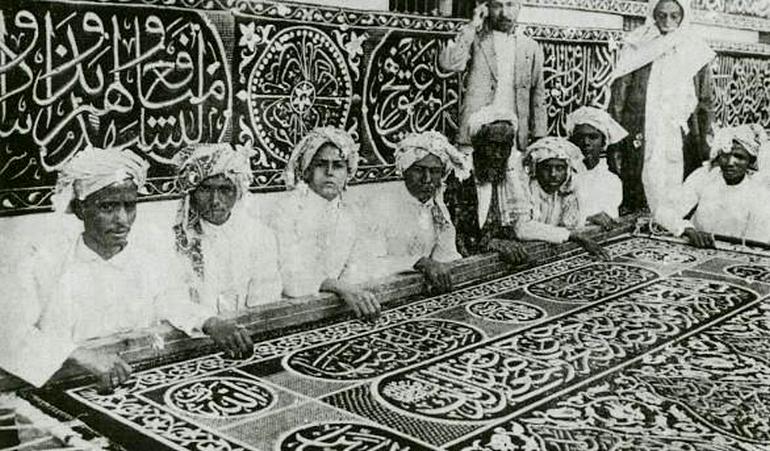

- In 1961, manufacturing moved back to Egypt before transferring again to Saudi Arabia.
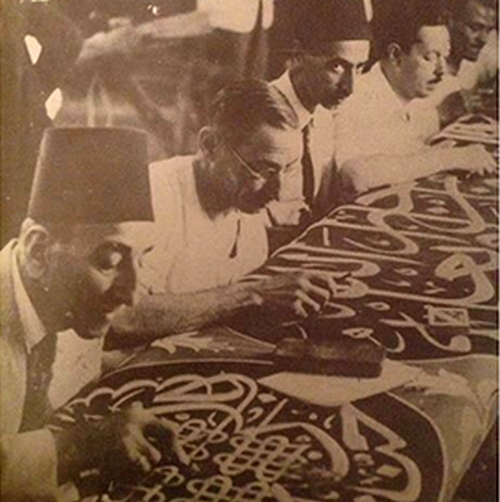

The Kiswa factory today
- A new factory was established in 1972 in the Umm Al-Joud district from where the Kiswah is still made today. It is located next to the Exhibition Of The Two Holy Mosques.
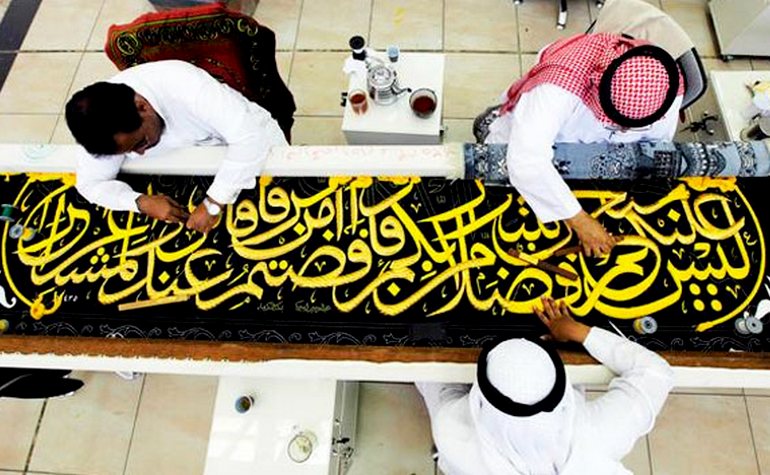

- As well as the Kiswah, it also produces the curtaining for the interior of the Ka’bah and the interior of the Sacred Chamber in Madinah.
- Master craftsmen and calligraphers use both traditional methods and the latest computer technology to design and manufacture the Kiswah and other holy textiles.
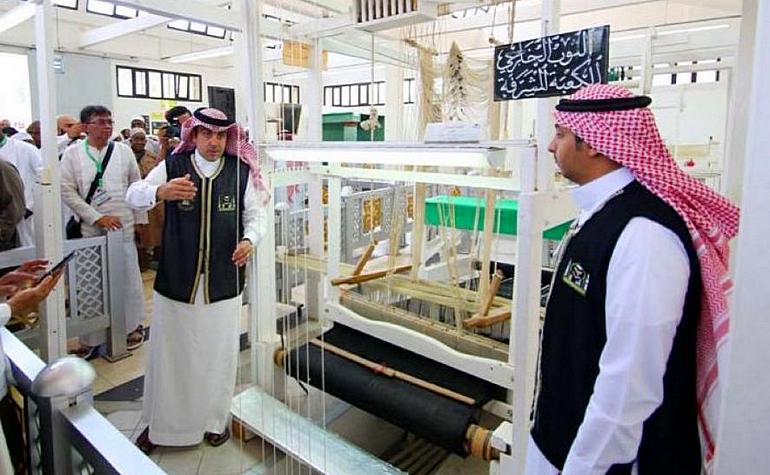

References: ArabNews.com, MuslimInk.com, TheNationalNews.com, Wikipedia, trc-leiden.nl, Hajj journey to the heart of Islam – The British Museum Press

